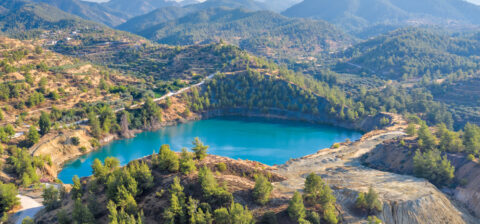African Leader
Our Economic Recovery
While South Africa plans for a post-COVID-19 era, the most pressing question on everyone’s minds is: what will the economic recovery look like and mean for the 60.1 million people who live in the country?
During the early 1990s, the ANC developed the Reconstruction and Development Programme (RDP), which provided a broad consensus on reconstruction and redistribution as the way South Africa could achieve growth and development. After the 1994 election, the government distanced itself from the RDP and embraced a variant of free-market capitalism for the country’s post-apartheid economic system. In 1996, the Growth, Employment and Redistribution (Gear) policy framework postulated that the country could achieve transformation and development through economic growth that would result from the expansion of the free market economy through lower taxes, privatisation, deregulation, competition and an independent Reserve Bank.
These measures hoped to stimulate private sector investment, produce high economic growth, create employment and income, and lower poverty. In 1999, the Reserve Bank adopted inflation targeting as its monetary policy framework. This made inflation – rather than employment, growth domestic product (GDP) or a combination of criteria – the primary goal of monetary policy. By the end of the 1990s, the ANC government had basically embraced free-market ideology to inform its post-apartheid economic policy framework. The results have been chronically low economic growth, high levels of unemployment and poverty, rising inequality and deindustrialisation.
Looking ahead, three scenarios are worth considering.
Indlulamthi Isbhujwa Scenario
The first scenario asks: what if the country’s recovery plan continues with the post-1996 policy framework? This scenario captures the Indlulamthi iSbhujwa scenario, which creates an enclave bourgeois nation, a country torn by deepening social divides, daily protests and cynical self-interest. It epitomises a loose-limbed jumpy nation with a frenetic edge. Under this Business as Usual (BAU) scenario, government spending on goods and services increases by 7.5 per cent a year and continues to weakly support industrial policies. Investment by the government and state-owned companies increases by six per cent a year. The government continues with its current public works and social grant programmes. The Reserve Bank continues with its inflation targeting policy and private sector credit extension grows by six per cent a year. The model’s simulation of this scenario shows that there will be an annual average GDP growth rate of 2.2 per cent a year, and by 2030, the unemployment and poverty rates will be 27 and 34 per cent respectively.
Indlulamthi Gwara Gwara Scenario
Over the past two years, Treasury and the Reserve Bank have proposed policy measures that are more consistent with an even more conservative policy framework. These include supply-side reforms, a more austere fiscal policy and a stricter inflation target. The second scenario, therefore, asks the question: what if the recovery plan implements even more conservative policies than those that were implemented after 1996? This “austerity policy scenario” captures the Gwara Gwara scenario – the ups and downs of a false dawn – that embodies a demoralised land or disorder and decay and creates a nation torn between immobility and restless energy.
Relative to the BAU scenario, and in addition to a wide range of supply-side measures, there will be cuts of 10 per cent in government final consumption spending, and investment by the government and state-owned companies will be cut by five per cent. The government will abandon its localisation policy and cut subsidies on products and production. The Reserve Bank will tighten monetary policy by lowering the six per cent upper bound for inflation to four per cent. Under this scenario, the Gwara Gwara outlook for the future is captured by the model’s results that include an annual GDP growth rate of 1.8 per cent, and unemployment and poverty rates of 29 and 36.5 per cent respectively by 2030.
Indlulamthi Nayi Le Walk Scenario
The third scenario asks the question: what if the government reconsiders the post-1996 policy framework to put the economy on an inclusive path? The proposed six-pillar policy framework is designed to create a nation in step with itself, as in the Indlulamithi Nayi le Walk scenario, which choreographs a vision of South Africa where growing social cohesion, economic expansion and a renewed sense of constitutionalism get the country going. The six-pillar policy framework that creates this outcome requires reforms in macroeconomic, social, microeconomic, and trade policies, private sector international support and provincial growth and development plans.
Under this Nayi le Walk scenario, South Africa would achieve an annual average GDP growth rate of 6.2 per cent. The economy would create between 8.7 and 10 million jobs and the unemployment rate would decline to 12 per cent. The number of people living in poverty will decline by 10 million and the national poverty rate will decline by almost 50 to 23 per cent. The Gini measure of income inequality will decline by 16 percentage points to 55 per cent. The six-pillar option would achieve a simultaneous expansion of the supply and demand sides of the economy. GDP would almost double over the decade, and average profit rates would remain above 16 per cent. Government revenue would grow in line with projected GDP growth, thereby generating the funds needed to pay for the scenario’s expected increase in government spending.
The larger size of the economy and lower real interest rates would result in a decline in the debt to GDP ratio to 40 per cent by 2030. Significant improvements in the delivery of social services and economic and social infrastructure across the country would result in the improved living conditions of poor families, and social cohesion will improve enabling stable capital accumulation.





 Sign-up and receive the Business Media MAGS newsletter OR SA Mining newsletter straight to your inbox.
Sign-up and receive the Business Media MAGS newsletter OR SA Mining newsletter straight to your inbox.